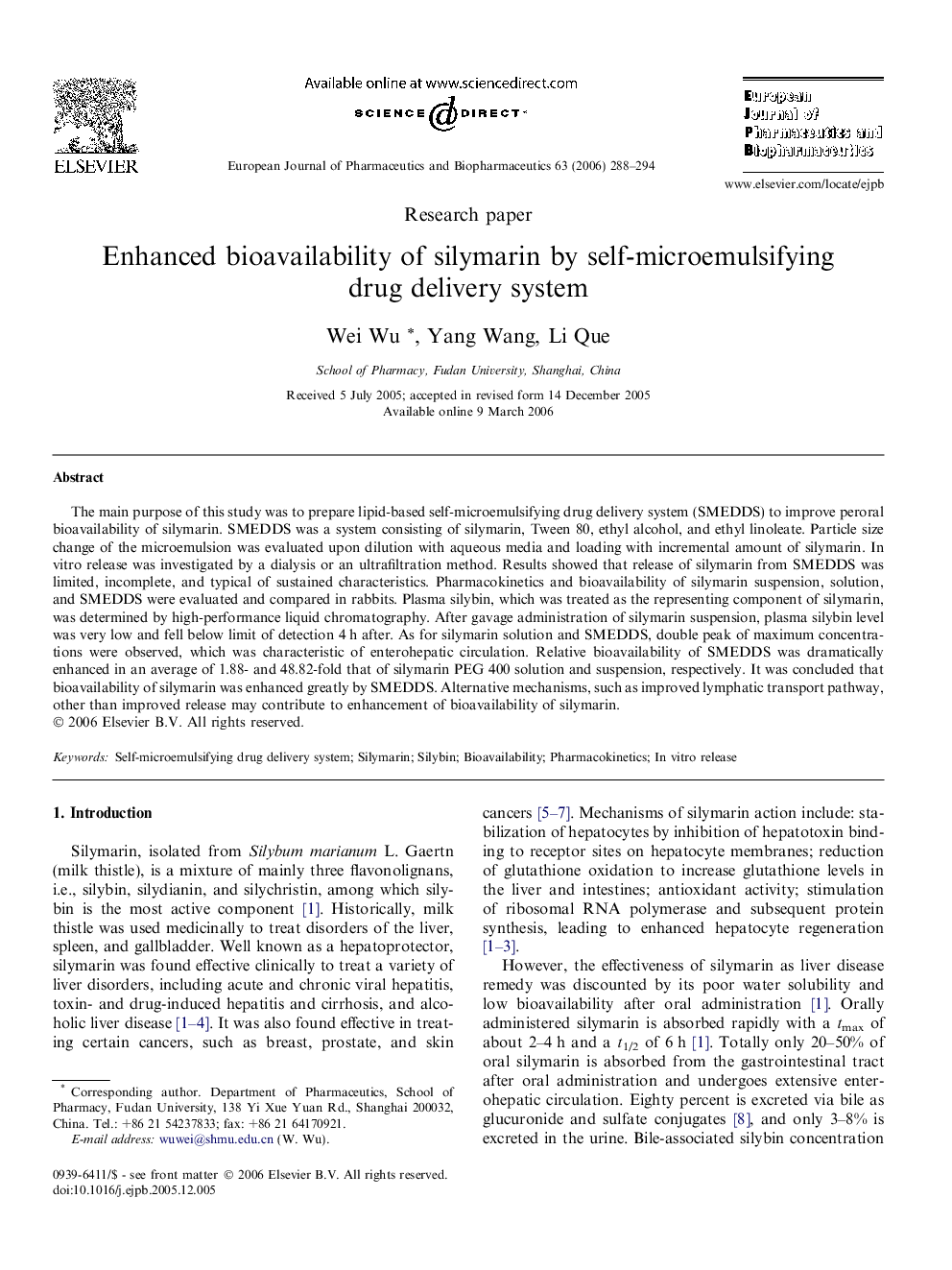| Article ID | Journal | Published Year | Pages | File Type |
|---|---|---|---|---|
| 2085007 | European Journal of Pharmaceutics and Biopharmaceutics | 2006 | 7 Pages |
The main purpose of this study was to prepare lipid-based self-microemulsifying drug delivery system (SMEDDS) to improve peroral bioavailability of silymarin. SMEDDS was a system consisting of silymarin, Tween 80, ethyl alcohol, and ethyl linoleate. Particle size change of the microemulsion was evaluated upon dilution with aqueous media and loading with incremental amount of silymarin. In vitro release was investigated by a dialysis or an ultrafiltration method. Results showed that release of silymarin from SMEDDS was limited, incomplete, and typical of sustained characteristics. Pharmacokinetics and bioavailability of silymarin suspension, solution, and SMEDDS were evaluated and compared in rabbits. Plasma silybin, which was treated as the representing component of silymarin, was determined by high-performance liquid chromatography. After gavage administration of silymarin suspension, plasma silybin level was very low and fell below limit of detection 4 h after. As for silymarin solution and SMEDDS, double peak of maximum concentrations were observed, which was characteristic of enterohepatic circulation. Relative bioavailability of SMEDDS was dramatically enhanced in an average of 1.88- and 48.82-fold that of silymarin PEG 400 solution and suspension, respectively. It was concluded that bioavailability of silymarin was enhanced greatly by SMEDDS. Alternative mechanisms, such as improved lymphatic transport pathway, other than improved release may contribute to enhancement of bioavailability of silymarin.
